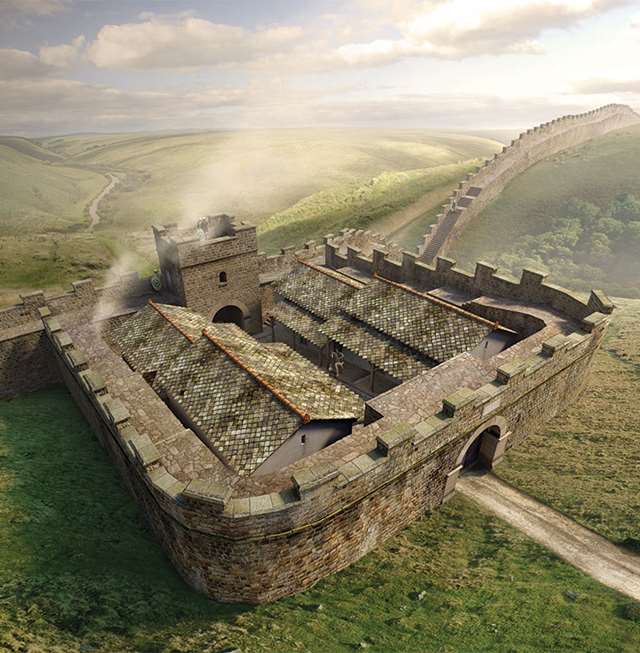The last Roman legions are leaving Britain under General Magnus Maximus, that ambitious and ruthless Spaniard, who proclaimed himself Emperor of Britain and launched his bid for imperial power.
For over 400 years Britain had lived under the rule of Rome. It was a land of grey-walled cities, colonnaded buildings and neat red-tiled houses. There were six thousand miles of Roman roads crisscrossing the hills and dales. Ships brought in glassware from Germany and fine wines from Italy. The lead mines in Derbyshire and the tin mines in Cornwall enriched the population. Tax collectors assessed the crops and collected their dues. Britons benefited from a safe and orderly life under the protection of the Rome and its legions stationed around the country.
As Maximus sailed for the Continent with all the best troops on the island, Britain was left entirely defenseless against raids by the Picts in the north and the Scoti in the west - the ancient Gaelic-speaking people of Ireland. Maximus landed his troops in the mouth of the Rhine and then went after the Western Roman Emperor Gratian. He defeated him in battle and his legions entered Rome unopposed. Maximus' dream lasted five years before he was defeated at the Battle of the Save and at the Battle of Poetovio by the Eastern Roman Emperor Theodosius. He was captured and executed at Aquileia on the shores of the Adriatic. His legions never returned to Britain, but took refuge in Brittany on the Atlantic coast of Gaul.
What is surprising is that even after the legions had left the island ending Roman rule, the ancient Britons still looked to Rome for help and went out of their way to preserve Roman institutions for almost a century. Ever heard of the Notitia Dignitatum?
Notitia Dignitatum is the most extraordinary document and appears to date from 428 AD. In Latin, it means "List of Offices". This was the organizational chart of all Roman civil and military posts in the Eastern and Western Roman Empire. It is one of the very few surviving documents of Roman government. Four copies of the lost original were made during the Renaissance from a copy made in the age of Charlemagne in the 8th or 9th century.
The Notitia Dignitatum shows that the ancient Britons continued to maintain the appearance of Roman control with the nomination of their officers until well into 420 AD. The manuscript goes into detail about the chief civil and military officials of the empire, together with their departmental staffs and, occasionally, their areas of expertise. It lists the names of 46 forts, half of which can be located with reasonable certainty because they match the names from other sources. It includes drawings of the insignia or regimental shield of each magistrate and the fort of each military commander. Remember this is happening some fifty years before the Germanic invaders - the Angles and the Saxons - invaded the island.
*Originally posted in September 2021


Comments ()